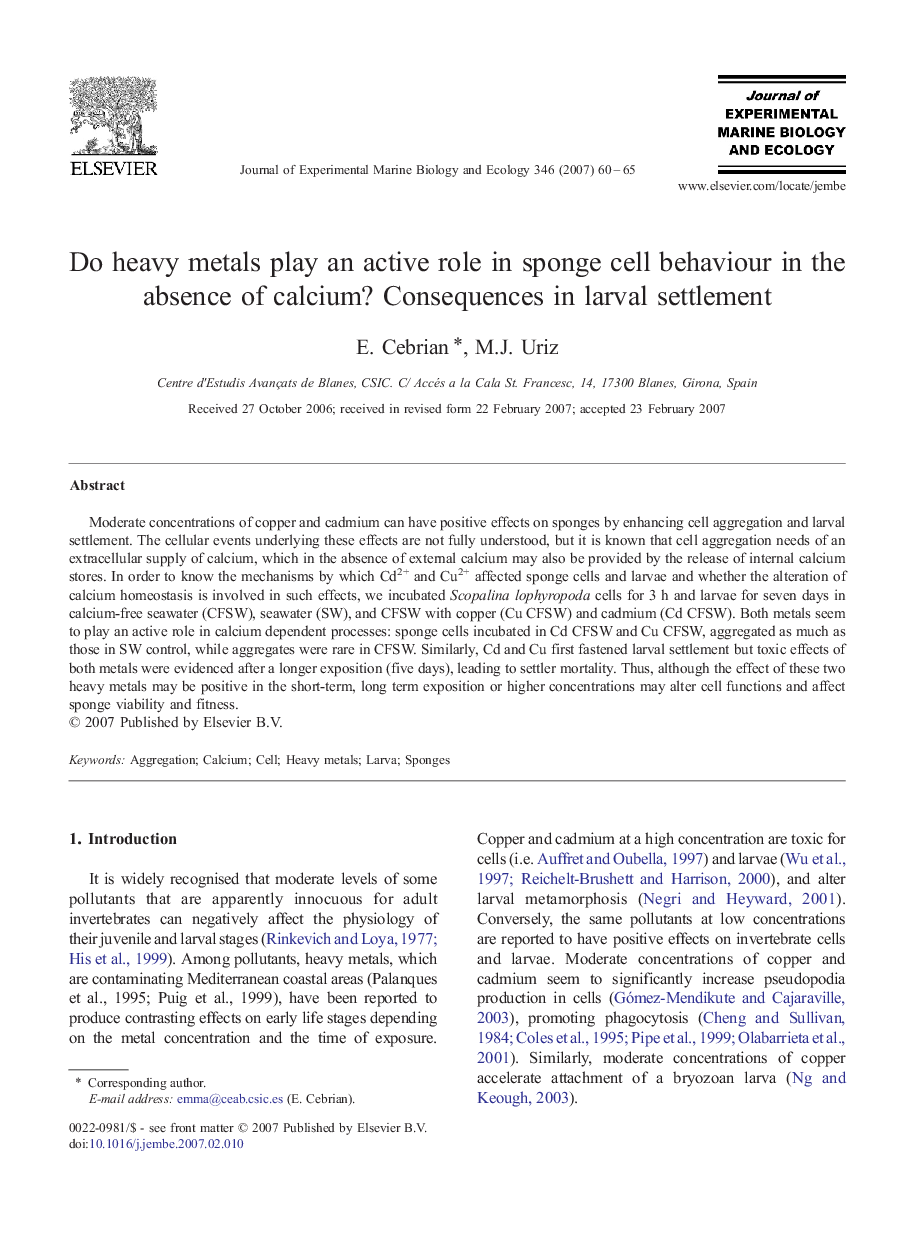| Article ID | Journal | Published Year | Pages | File Type |
|---|---|---|---|---|
| 4397780 | Journal of Experimental Marine Biology and Ecology | 2007 | 6 Pages |
Moderate concentrations of copper and cadmium can have positive effects on sponges by enhancing cell aggregation and larval settlement. The cellular events underlying these effects are not fully understood, but it is known that cell aggregation needs of an extracellular supply of calcium, which in the absence of external calcium may also be provided by the release of internal calcium stores. In order to know the mechanisms by which Cd2+ and Cu2+ affected sponge cells and larvae and whether the alteration of calcium homeostasis is involved in such effects, we incubated Scopalina lophyropoda cells for 3 h and larvae for seven days in calcium-free seawater (CFSW), seawater (SW), and CFSW with copper (Cu CFSW) and cadmium (Cd CFSW). Both metals seem to play an active role in calcium dependent processes: sponge cells incubated in Cd CFSW and Cu CFSW, aggregated as much as those in SW control, while aggregates were rare in CFSW. Similarly, Cd and Cu first fastened larval settlement but toxic effects of both metals were evidenced after a longer exposition (five days), leading to settler mortality. Thus, although the effect of these two heavy metals may be positive in the short-term, long term exposition or higher concentrations may alter cell functions and affect sponge viability and fitness.
